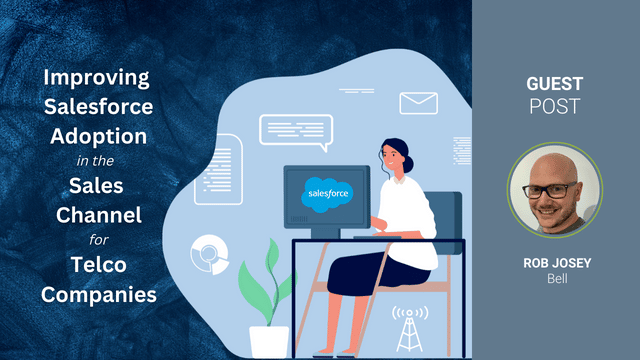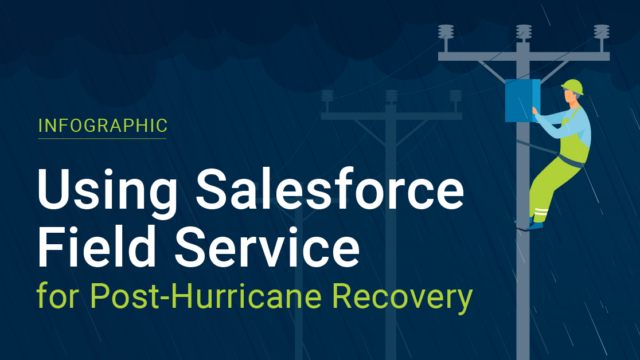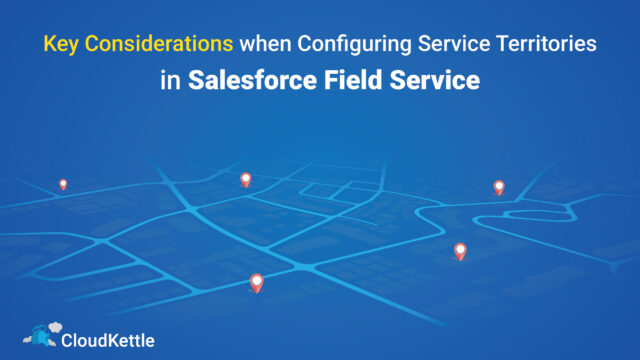This post is co-authored by
Robert Josey from Bell
There’s no debate on the topic: Salesforce is an incredibly valuable tool. It can be the source of truth and the final authority on what is happening with new opportunities and existing clients. Across the Telco industry, Salesforce is replacing legacy systems for sales pipeline, performance, activity management, service quality, and technician dispatching. However, the success of your Salesforce org depends largely on your team actually using the platform.
Change management is challenging in any organization, and improving Salesforce adoption within your company requires a similar level of commitment. By reviewing the challenges and the strategies that we’ve witnessed first hand, we’re hoping to let our hindsight be your foresight so you can implement a strategy that will maximize Salesforce adoption across your Telco organization.
Challenges
So what are the main challenges? Why do people resist adopting a tool that will so clearly improve the quality and efficacy of their work? These are the reasons we commonly see:
A focus on outcomes and technology and lack of change management – Salesforce is not just a “flip the switch and go” platform. A successful implementation requires executive buy-in and a plan for adoption.
Forgetting about the “What’s in it For Me” factor – If the end user doesn’t have a fundamental understanding of how or why Salesforce will benefit them, they’re very unlikely to commit to using the platform.
Lack of ongoing planned and budgeted investments – Enterprise platforms require upkeep and enhancements. This requires a budget of both time and money for internal headcount and external resources.
Lack of tracking and reporting on adoption, data quality, and accuracy – Deploying the platform is wonderful; but that’s really just the beginning of the journey. It’s difficult to tell how successful the adoption is if you don’t have metrics to report on. How many users are logging in daily/monthly? How much time are users spending on the platform? Being able to track and report on these KPIs will help you to understand if adoption is actually occurring.
Strategies
Despite the challenges that come with adoption, there are many strategies that can help your Salesforce org become an essential part of every team member’s day.
Involvement of the Right Parties – While you may not need to involve every person in the company, it’s wise to seek some level of feedback from anyone who would have their business processes impacted in a significant way.
- The Executive Team (and all levels of Leadership) should be clear on the vision from day one, express their support for Salesforce, and reinforce its importance on an ongoing basis, not just at kickoff.
- End Users should be consulted regularly on what’s working and what isn’t.
- IT/Security/Legal/Regulatory should all be aware of the data privacy and security aspects of the platform, and ensure all practices are compliant with relevant legislation.
- Marketing should be aware of how Salesforce is being used, how it can be leveraged to help drive marketing initiatives and their role in driving pipeline into the platform Business Intelligence/Reporting should be involved in the creation of KPIs and supporting dashboards for all levels, from end users to the c-suite.
Team Buy-In – One of the best (and most basic) ways to help enforce adoption is to communicate regularly how Salesforce makes life easier for your reps. Use data points from Salesforce when showcasing achievements of the team and reward proper use of the platform. On the flip side, sometimes people react to the threat of the stick more than the lure of the carrot, so it can also be beneficial to create disadvantages to not using Salesforce.
Find the Super Users – Every team has users who will fall in love with Salesforce. They will instantly see its power and value, and dive headfirst into the platform. Find these people. Recognize them. Make them feel seen and special. These are the people that the rest of your team will naturally gravitate towards when they’re running into issues with Salesforce, so once you find them, start listening and start executing on their wish list.
Leverage Existing Salesforce Tools Resources – Salesforce has a wealth of resources and information available to those looking for help. Make it as easy as possible for your users to get help via a self-serve/”find the answer yourself” model. You can also create a “Help” button visible throughout the platform that allows Users to create cases. On the Admin end, you will want to provide updates to cases frequently, and recognize the people who file cases through this method instead of just sending an email to Admin.
Training, Training, Training – In the Telco world, turnover is part of life. This employee churn rate means that it is essential to train the trainer and have existing staff members ready and able to train new team members as they join. Provide on demand videos and resources so employees can have constant access to materials. Also leverage Trailhead as part of onboarding. Use this gamified platform to create healthy competition within your team, and reward those that invest in time and training.
Continuous Feedback and Improvement – Once Salesforce is deployed, you should be in the habit of soliciting feedback from end users to learn where there are opportunities for improvement. Where possible, deploy those easy “Quality of life” fixes on a regular basis so end users feel like they are a priority, and celebrate those who provide ideas for improvement.
See a point in here that really resonates with you? If you’re working on increasing adoption within your Salesforce org, get in touch! We’d love to chat with you.
This post is co-authored
by Robert Josey from Bell




